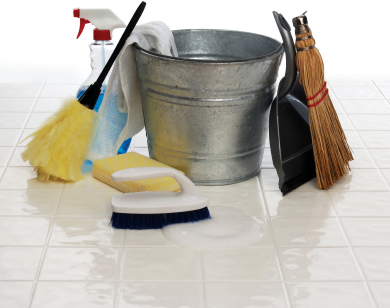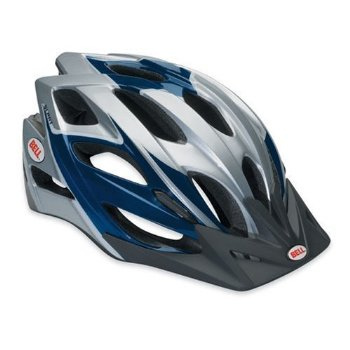 A nationwide study by the Washington National Institute for Wellness Solutions (IWS) found that only 10% of middle-class workers believe that they have enough savings to cover medical emergencies and the long-term cost of a critical illness.
A nationwide study by the Washington National Institute for Wellness Solutions (IWS) found that only 10% of middle-class workers believe that they have enough savings to cover medical emergencies and the long-term cost of a critical illness.
Diseases such as cancer, heart disease, or Alzheimer’s can be life-changing financially, as well as personally. Although most respondents said that, even with Medical and Disability Income insurance, they would need out-of-pocket funds to cover their expenses from a serious medical condition, they lack the savings to fall back on. Nearly half (45%) felt they would never recover financially from a battle with Alzheimer’s or dementia; for cancer, the percentage is 38%.
Out of 1,001 survey participants between the ages of 30 and 66 and annual household incomes of $35,000 to $99,999, 75% have saved less than $20,000. Among these, half have less than $2,000 in savings – and one in four have no current savings.
One-fourth of respondents “did not know” what resources they would use to help offset their expenses, says IWS. Others would use credit cards (28%), loans from friends and family (23%) or financial institutions (19%) to help cover what insurance doesn’t.
Washington National Insurance Co president Barbara Stewart advises employees to give themselves a reality check about the financial burden of critical illness. “Find out what your current insurance will – and will not – cover” says Stewart, “and then assess your overall financial health. Identify the gaps between the resources you would need and the options you have.”
We recommend that you offer your employees Critical Illness coverage as a voluntary benefit that will provide an extra layer of financial protection when they face the challenge of a serious disease. Give us a call.
Read more
Mold growth in your commercial building can cause health concerns and compromise your building’s integrity. Because mold grows quickly in damp conditions and thrives on wood, insulation, carpet, paper, and other organic surfaces where moisture and oxygen are present, it’s especially problematic during the spring season.  Prevent health concerns like asthma, respiratory infections, breathing difficulties, itchy eyes, nasal congestion, and skin irritations when you reduce mold in several ways.
Prevent health concerns like asthma, respiratory infections, breathing difficulties, itchy eyes, nasal congestion, and skin irritations when you reduce mold in several ways.
Inspect your Building for Mold Growth
Mold thrives in damp, dark and humid areas, including basements, crawl spaces, bathrooms, carpeted areas, and storage spaces. Inspect your entire building, including secluded areas, at least once a week. Look for visible mold growth that may be green, black or brown, and note any spotty or fuzzy stains, another sign of mold.
Repair Leaks
If you notice damp areas in your commercial space, look for leaks that could cause and encourage mold growth. Repair broken pipes, wall cracks or unsealed windows so that the area remains dry and mold-free.
Install Dehumidifiers
Damp areas and condensation could cause mold to grow, so install dehumidifiers where necessary. These appliances reduce moisture and keep the area dry and free of dangerous mold.
Clean the HVAC System
The heating, ventilation and air conditioning system could spread mold spores throughout your building and increase health risks. Clean the system thoroughly and maintain it as you protect your employees, customers and vendors.
Treat Mold Properly
Small areas of mold growth can be cleaned and treated with bleach or another mold cleanser. Remember to wear a respirator and protective clothing as you perform this task to protect yourself from an allergic reaction.
If your building requires more extensive remediation methods, hire a professional to access the mold, determine the extent of the damage and create a removal plan. Depending on the growth, treatment could require renovations like drywall or sub-flooring replacement. In this case, hire a reliable professional to remove the mold and treat the area properly.
File an Insurance Claim
Your commercial property insurance policy may cover mold removal, especially if it stems from a covered peril, such as a storm or act of vandalism. Check the policy or talk to your agent as you determine if you can file a claim and cover the mold removal and treatment.
Implement an Ongoing Inspection Program
After removing and treating the mold, schedule regular inspections of the area. Look for evidence of mold growth and excessive moisture as you prevent hazardous mold growth.
Mold damages your commercial building and affects the health of your employees. This spring, reduce mold and protect your assets with these tips. For more tips, talk to your commercial property insurance agent.
Read more
If you did not know about the new law and the health insurance mandate (Affordable Care Act (Covered CA) , luckily you now have until April 30, 2020 to sign up for a quality health plan. Time is running out.
In light of the COVID-19 pandemic and conditions, the state allows this exemption as a special enrollment. It is not clear what the expiration date is at this time. Read more here – https://www.coveredca.com/individuals-and-families/getting-covered/special-enrollment/?gclid=EAIaIQobChMI-f6t2PuD6QIVFP5kCh2zTgmZEAAYASABEgIVN_D_BwE&gclsrc=aw.ds
This gives individuals and families a little more time to get health insurance. Applicants can cite COVID-19 as an exemption which will allow late entry into the program even though the open enrollment period has expired – apply on https://coveredca.com
Please get in touch with questions.
UPDATED 4/25/2020- We posted the wrong date and some important information was missing in the original post.
Read more
 Spring cleaning does more than remove dirt and grime left over from winter. It also protects your house and reduces maintenance costs. So, try four spring cleaning tips this season as you cleanse your home.
Spring cleaning does more than remove dirt and grime left over from winter. It also protects your house and reduces maintenance costs. So, try four spring cleaning tips this season as you cleanse your home.
1. Wash walls, windows and baseboards.
Often overlooked during weekly cleaning, the walls, windows and baseboards of your home harbor plenty of dirt and dust. Wash them at least once a year to ensure they look nice and to protect their finish.
*Move the furniture away from the walls, and wipe down the walls with a slightly damp cloth or magic eraser.
*The baseboards are also easy to wash off with a damp cloth. A toothbrush reaches into all the crevices.
*Use vinegar on the windows instead of glass cleaner to cut through accumulated dirt and prevent streaks.
2. Scrub the carpet.
Accumulated dirt, pet dander and odors can quickly ruin your carpets. Instead of merely running the vacuum each week, deep clean the carpets at least once a year. You can easily rent a carpet cleaner and do the job yourself or hire a professional cleaner as you prolong the life of your floors.
3. Care for furniture.
Modern or antique, your furniture will last longer when it’s free from dirt. Take time this spring to wipe off each piece from top to bottom. Use a soft cloth on wood to prevent scratches, and remember to spot treat dirty upholstery, flip the cushions and repair any tears or holes in the fabric.
4. Reduce clutter.
In addition to attracting pests and rodents, clutter reduces your ability to exit your home in an emergency. Commit to tossing or donating clutter like piles of books, excess furniture or anything you haven’t used in six months. Your home will thank you.
With these four spring cleaning tips, you’re able to reduce maintenance costs over time. So, look forward to protecting your home this season.
Read more
A rise in temperatures this month can signal spring fever in your office. Your human resources department staff can improve focus and keep everyone on task in several ways.
1. Provide New Challenges
Your employees may feel distracted in part because they’re bored, so provide challenges. Ask them to work in a different department for a day, take on a special project or work with a high school intern. The challenge can provide a welcome distraction and jump-start focus and concentration.
2. Offer a Class
Give employees the opportunity to learn a new skill. You can poll your staff for suggestions or offer foreign language, management or coding classes. While learning something new, your employees will focus on something other than the nice weather.
3. Promote Exercise
Physical activity improves focus, an excellent reason to host a fitness class over lunch, offer discounts to the local gym or encourage employees to bike or walk to work. As your staff members add more exercise into their daily routines, they also focus better on their work-related tasks.
4. Encourage Breaks
Remind employees that breaks can improve their mental health, productivity and focus. Set a timer for hourly stretch breaks, and share the value of regular lunch breaks away from the desk.
5. Change the Scenery
Hang colorful artwork around the office or commission a floral mural in the break room. You can also allow employees to meet at a local coffee shop, play disc golf during lunch or hold walking meetings outdoors. Employees will appreciate the opportunity to enjoy the warm weather, and the change of scenery boosts creativity, productivity and motivation.
6. Stock Healthy Snacks and Beverages
Fill your break room with healthy food and beverage options, including fruit, veggies, whole grains and water. These snack options boost mood and creativity and improve your employees’ overall health.
7. Play a Game
Challenge employees to participate in a March Madness basketball bracket, host a chili cook-off or reward teams who reach productivity goals. Games keep employees entertained and as a bonus, you’ll see a stronger spirit of cooperation.
8. Bring the Outdoors Inside
Plants can purify the air and improve mood. Arrange plants around the office as you bring a bit of the outdoors inside your office.
9. Adjust Work Hours
If your employees can arrive early and leave work early, they get to enjoy the warm, sunny afternoon weather. Adjust work hours, if possible, and allow employees to indulge their spring fever while completing their work.
Spring fever might try to curtail productivity in your office, but you can improve focus with these steps. Everyone will be happier and work smarter thanks to your efforts.
Read more
Spring will be here soon, and bicycling can be a fun activity your entire family enjoys. Plus, it’s heart-healthy and reduces stress. Before heading out for a ride, be sure  everyone in your family owns and wears a correctly sized bicycle helmet.
everyone in your family owns and wears a correctly sized bicycle helmet.
1. Verify Safety
Helmets manufactured since March 1999 must meet Consumer Product Safety Committee (CPSC) standards. Look for the CPSC label or sticker inside the helmet and know that this safety equipment will reduce the effects of any impacts.
2. Select the Right Size
Helmet size varies between brands, so take head circumference measurements before you buy helmets. To find your circumference, wrap a ribbon around your head. It should sit on your forehead, just above your ears and extend to the bottom of your hairline on your neck. Then, stretch the tape on a ruler.
Small: 52-58 centimeters
Medium: 56-62 centimeters
Large: 60-66 centimeters
Ideally, helmets should fit snugly but comfortably. They also should fit level on your head with the “Y” of the strap falling at your ear lobe’s bottom. Helmets should also rest low on your forehead and sit about one to two finger-widths above your eyebrows. With it on, you should be able to hear and see clearly.
3. Look for Padded Inserts
Sometimes, extra padding helps a helmet fit better, especially for kids. Follow manufacturer’s instructions when inserting the padding properly.
4. Choose a Color
Whether you want a helmet in your favorite color or one that matches your bike, the color isn’t as important as the fit. However, you may need to prioritize the helmet’s color as a way to encourage your reluctant children to wear and enjoy their bicycle helmets.
Your family can bicycle together and stay healthy as you bond. Just be sure to wear bicycle helmets. They prevent head injuries and are a must each time you step onto your bike. Choose the right helmet and stay safe.
Read more
 A nationwide study by the Washington National Institute for Wellness Solutions (IWS) found that only 10% of middle-class workers believe that they have enough savings to cover medical emergencies and the long-term cost of a critical illness.
A nationwide study by the Washington National Institute for Wellness Solutions (IWS) found that only 10% of middle-class workers believe that they have enough savings to cover medical emergencies and the long-term cost of a critical illness.
 Prevent health concerns like asthma, respiratory infections, breathing difficulties, itchy eyes, nasal congestion, and skin irritations when you reduce mold in several ways.
Prevent health concerns like asthma, respiratory infections, breathing difficulties, itchy eyes, nasal congestion, and skin irritations when you reduce mold in several ways. Spring cleaning does more than remove dirt and grime left over from winter. It also protects your house and reduces maintenance costs. So, try four spring cleaning tips this season as you cleanse your home.
Spring cleaning does more than remove dirt and grime left over from winter. It also protects your house and reduces maintenance costs. So, try four spring cleaning tips this season as you cleanse your home.
 everyone in your family owns and wears a correctly sized bicycle helmet.
everyone in your family owns and wears a correctly sized bicycle helmet.